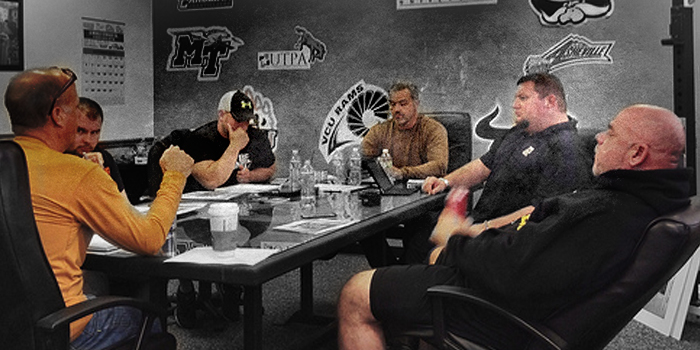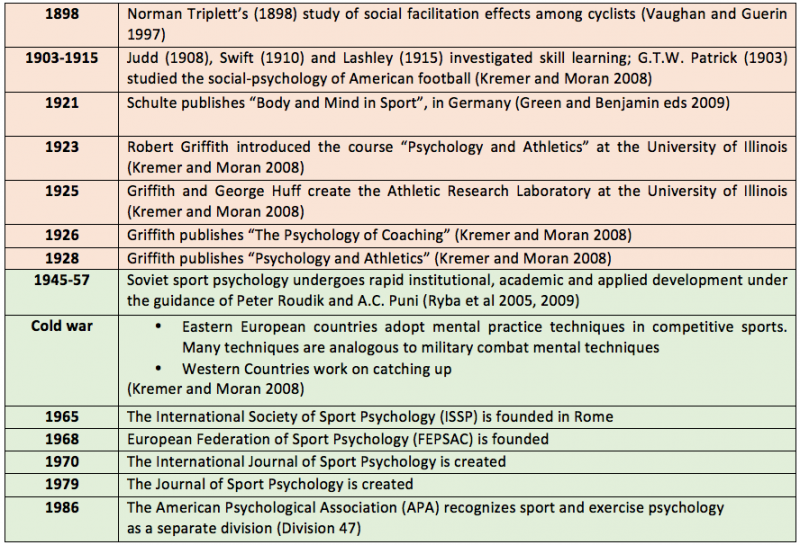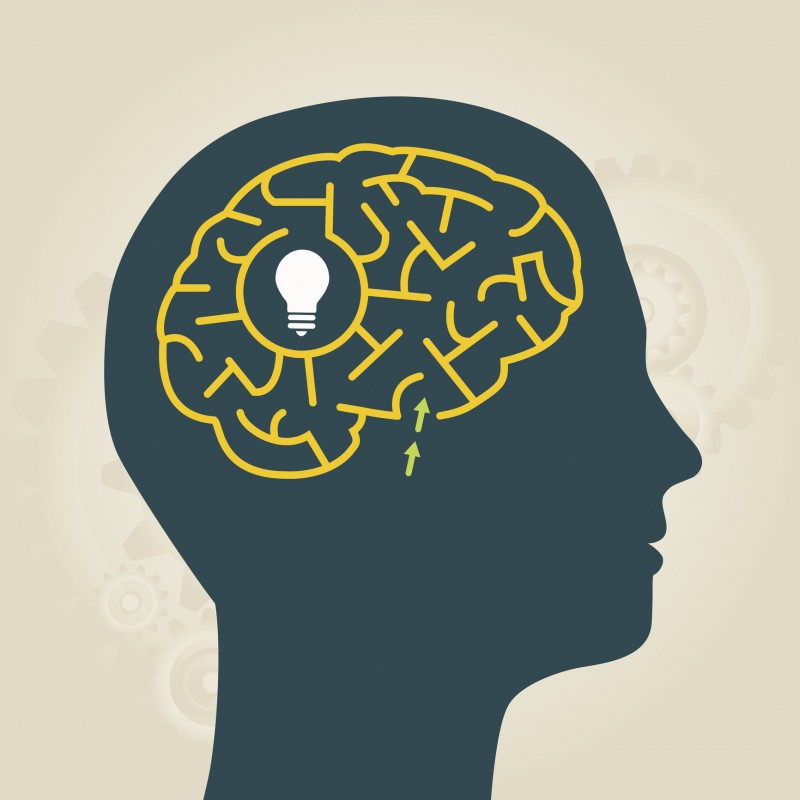
In this series about interdisciplinarity in sports and exercise performance, we have already reviewed the concepts and challenges of having different professional and scientific disciplines “talk” to each other, and how the strength coach and the nutritionist handle it.
Today we will look into sports psychology. While the coach is (unfairly) expected to multi-task full time and the nutritionist is in the eye of the food industry hurricane, both being pushed into multi and interdisciplinarity even when there is not a proper structure for that, the same doesn’t happen with the sports psychologist.
As we will see, sports psychology evolved in waves of growth. And as with most sports related fields, the most intense of these happened during the Cold War. But as it failed to deliver the unrealistic results expected from its tools, sports psychology remained a well-organized academic discipline but not equally well understood as an essential component of performance.
PART 1: All Together Now — Meet the Disciplines and Our Hosts
In a sense, sports psychology enjoys some of the opposite response as sports physical therapy does: While it is poorly institutionalized, sports physical therapy is always seen as an indispensable component whenever high performance is pursued, possibly because injuries are obvious and unavoidable, while psychological components of performance are not as loud.
However, sports psychology is where the understanding of interdisciplinarity is most consensual. This is a textbook definition:
“Sport psychology is an interdisciplinary science that draws on knowledge from many related fields including biomechanics, physiology, kinesiology and psychology. It involves the study of how psychological factors affect performance and how participation in sport and exercise affect psychological and physical factors.” (Weinberg 2014)
Let us take a look at its history and the experience of present-day practitioners to shed some light on this puzzle.
The Evolution of Sports Psychology
Regardless of the universality principle that guides all scientific endeavor, there are local scientific cultures. There have always been and will always have. However, at a certain point, globalization takes over and regional idiosyncrasies become background context. Sports psychology, like so many scientific disciplines, only became more or less globalized after the Cold War.
When we look at the evolution timeline, sports psychology seems to have followed three waves: the first, where enthusiastic pioneering efforts were made in the USA, in Western Europe and also in the Soviet Union (after the Revolution). It peaks in the 1920s and then slowly loses momentum.
The second wave is definitely the Cold War. That is when Soviet and Eastern European country’s far outweighed American and Western sports psychology both academically and in applied form. There are authors that believe it to be mostly applied and there is much we still don’t know concerning what was done during those years. However, possibly because of the secrecy aura that covered all military research, the expectations about creating “the perfect athlete/soldier” never truly materialized.
The third wave is what happened since the 1990s: a great growth in research, institutionalization, with graduate programs and conferences, and new and powerful research tools. Many came from what is known today as “positive psychology.” (Seligman 2000) The term was coined because this approach focuses more on positive, as opposed to pathological, aspects of human behavior: motivation, goal setting, meaningfulness, mindfulness, etc.
There has always been interest and awareness about the mental aspects of human performance. However, sport couldn’t have been an object of that kind of inquiry before it existed in its modern form, which only happened in the 19th century. And that is when the first publications expressing interest in the subject date from.
Part 2: All Together Now — The Coach, This Polyglot
In the 1920s, in different parts of the world, many authors advocated the idea that sport and performance were objects of study and intervention in and of themselves. In the above timeline, you can see that textbooks were written, institutes were created, and classes were taught.
However, sports psychology was in its infancy and, in its applied form, was not all that impressive. Institutionalized sport (Olympic and professional) did not systematically adopt it as an indispensable tool.
It was war, WWII and the Cold War that it spawned, that really pushed sports psychology forward in ways it had never been pushed before. It has been so with most sports related sciences. But concerning sports psychology, we shouldn’t be surprised at all: one of its first proponents is the founder of the Olympic Committee himself, Pierre de Coubertain. And it is a much-supported thesis that the modern Olympic Games were created as a sports counterpart of international conflict, a parody of world wars and war itself (Green and Benjamin eds 2009).
The truth is that most of the issues that engage sports psychologists today were set during the first and second waves, but the outlook is different. Take “mental toughness,” for example. It is a big thing in modern sports psychology (as well as other sub-fields). Its origins can be traced back to the military perspective advanced by A.C. Puni in the early days of Soviet sport psychology (and employed in military context): boevaya gotovnost, or “readiness to fight” (Sheard 2012). But whereas boevaya gotovnost’s focus was on suppressing whatever would be on the way of winning (a symbolic or real war), mental toughness today is mostly about being emotionally prepared (rather than quenched) for challenges.
Today, sports psychology subjects and intervention areas include youth sport, personality studies (mental toughness, self-efficacy), coach-athlete relationship, motivation, goal-setting, eating disorders and career transitions, among others.
The People Who Do It
I have interviewed three professionals in the general field of sports psychology: two clinical psychologists and doctors in psychology (Dr. Sharon Chirban and Dr. Joao Ricardo Lebert Cozac) and a mental skills/sports psychology coach (Jonathan Pietrunti).
PART 3: All Together Now — The Nutritionist
The first question is always “why did you choose this career?” The three answers show much of what sports psychology’s challenges are today.
Dr. Chirban answered,
“I thought child athletes needed to be saved from their parents. My interest grew from there as I enjoyed working with athletes and all of the psychological issues that comes with a high performance person.”
I have lost count of the number of times Joao told me the same thing. His answer to the interview question shows why: “Before becoming a sports psychologist, I worked in clinical psychology with children and adolescents. The absence of a deeper and more coherent psycho-social analytical perspective about childhood and adolescence always intrigued me and I went on to study that in graduate school."
The number of research studies published on young athletes’ relationships with parents and coaches reflects these two psychologists’ concerns. Adults have a determinant role not only in the (young) athlete’s performance but in these (young) people’s mental health (Jowett & Cramer 2010, Leff & Hoyle 1995, Coakley 1992).
This first issue already reveals the interdisciplinary nature of sports psychology: one of the participants in the relationship under scrutiny, the coach, is a potential another member of an interdisciplinary team. And both coach and psychologist need to handle the adult with true power in the relationship: the parent.
Jonathan Pietrunti comes from the adult side of the puzzle:
“I have what I would call a very 'eclectic' background. Much of my experience comes in the form of leadership as a Chief Petty Officer in the United States Navy. I worked on munitions, and as a Command Fitness Leader at all of my commands, in addition to leadership roles ranging from small divisions to departments of more than 300 personnel. I have also served as a military instructor, a test/evaluation maintainer, a drug and alcohol program advisor, a career counselor, etc. I seemed to be in the right places at the right times…or the wrong places, depending on the point of view. Regardless, I have had a lot of interesting experiences in life and leadership. (…) This seemed to be the natural extension of the leadership and coaching that I did in the military."
As history shows, there is a lot in common between military and athletic situations (although, fortunately, less than the Cold War years projected).
My three interviewees are in private practice but have multi and interdisciplinary participation in sports performance.
“Some of my work occurs within a sports medicine/orthopedic practice. I regularly collaborate with physicians, surgeons, physical therapists, strength and conditioning coaches, sports dieticians, psychiatrists," wrote Dr. Chirban.
Jonathan Pietrunti is a member of a sports performance organization that gathers professionals from different fields, Complete Human Performance (CHP):
“I have found that CHP is a wonderful coaching cadre, where the whole truly is greater than the sum of its parts. Oftentimes we have athletes who are being coached by multiple coaches in multiple domains. For example, an athlete myself a strength coach, a nutrition coach, and myself as a mental skills coach. This requires a lot of communication up and down the chain of command, as well as humility on the part of all parties."
Of the three of them, Dr. Cozac is the one closest to high profile professional sports, where all the good (and the bad) things are exacerbated. He was recently again hired by a professional soccer team as part of the technical committee.
“This way athletes can see that the psychologist is integrated in the technical decisions. We have weekly meetings between the sports physician, the psychologist, the strength and conditioning coach and the head coach to discuss all the important things that happened in that period: training, games, etc. We talk about individual and team performance and this helps everybody achieve better results."
He has been part of multi-disciplinary teams (with different degrees of interdisciplinarity) for decades.
“I recall one athlete that suddenly began underperforming and the causes were obscure. But because I also supervised him clinically, I knew he was under emotional stress because of his mother’s illness. That had affected his eating behavior and sleep cycle. During a meeting between the head coach, the strength and conditioning coach and myself we could finally establish that his physical symptoms had a psychological cause. This way, we were able to design a closer intervention to help this athlete return to his previous levels of performance”.
Beyond Sport
All three of my interviewees agreed or pointed out that there is a carryover from sports psychology to “life in general."
“My sports psychology skills include working on all aspects of performance enhancement. I include life/work balance, adaptive perfectionism (versus toxic) and bring a value of sports and exercise to my general psychotherapy practice to improve individual mental health", wrote Dr. Chirban.
Dr. Cozac answered that the most common issues in sports psychology consultations are associated with the disconnection between training performance and competitive success. These athletes are usually doing great in training but underperform in competition because of fears, pressure and melancholic states originated from poor psychological preparation. They frequently present high anxiety and low concentration, attention, and focus. But as often as those complaints are the personal issues interfering in performance: personal relationships, family and affective history and important emotional development gaps.
MORE: Introducing the New Peak Mental Performance Podcast with Guest Dr. Steve Graef
“I understand that sports psychology can offer important contributions both to the human being and the ‘athletic being’. My concept of ‘athlete’ encompasses the human aspects of the individual’s emotional, psychological, social, pedagogical, affective and family development. Through high performance, sports psychology offers an increased level of self-awareness, self-control and self-efficacy for daily tasks. Sport, in itself, is a great source of self-knowledge that can be channeled to many situations of the person’s life. Learning to win and lose is only one of the skills that high performance develops.”
Harassed by Scam and Pseudo-Science
Of all the sports and performance-related fields, sports psychology is probably the most victimized by opportunists from the outside. Let’s face it, “spondylolisthesis” is kind of hard even to write. The number of scammers willing to fix spondylolisthesis is way smaller than those talking about, say, “motivation”, “goals” or “purpose”." “Motivational speakers” make millions of dollars and are hired by professional sports teams, where only a good sports psychologist could really handle the job.
“A lot of the current pop-culture self-help books and 'mental toughness' books are really just a lot of feel-good anecdotes with very little in terms of real, actionable steps to help someone improve their performance and well-being. As such, the sport psychology field was considered on the fringe of 'woo' for a while, or was considered too touchy-feely. Gladly, the connection between the mind and body, and specifically with self-talk/visualization and performance, is becoming more documented. The bottom line is that this stuff works, so it is starting to get more and more traction in the US”, says Jonathan Pietrunti.
Dr. Cozac has many horror stories to tell that were not covered by this interview. These are stories that unfortunately made the Brazilian (and international) news. With politics-based hiring or firing of professionals and hiring of unqualified professionals that harm athletes, this has all been in the news and possibly harmed the respectability of sports psychology in society. Although he agrees with Dr. Chirban and Jonathan Pietrunti concerning a higher acceptance and understanding about the importance of sports psychology, I feel he is much less optimistic.
As Dr. Chirban remarked, at the “high end” (Olympic and professional sports), it is not a bed of roses.
And it is never a bed of roses. In the next chapter of this series, you will be introduced to sports physical therapy, where the damaged are poured in to get fixed and hope for a miracle.
Acknowledgements
References
- Coakley, Jay. "Burnout among adolescent athletes: A personal failure or social problem?." Sociology of sport journal 9.3 (1992): 271-285.
- Green, Christopher D., and Ludy T. Benjamin, eds. Psychology gets in the game: sport, mind, and behavior, 1880-1960. U of Nebraska Press, 2009.
- Jowett, Sophia, and Duncan Cramer. "The prediction of young athletes’ physical self from perceptions of relationships with parents and coaches." Psychology of Sport and Exercise 11.2 (2010): 140-147.
- Kremer, John, and Aidan Moran. "Swifter, higher, stronger-The history of sport psychology."PSYCHOLOGIST21.8 (2008): 740-742.
- Leff, Stephen S., and Rick H. Hoyle. "Young athletes' perceptions of parental support and pressure." Journal of youth and adolescence 24.2 (1995): 187-203.
- Ryba, Tatiana V., Natalia B. Stambulova, and Craig A. Wrisberg. "Forward to the past: Puni's model of volitional preparation in sport." International Journal of Sport and Exercise Psychology 7.3 (2009): 275-291.
- Ryba, Tatiana V., Natalia B. Stambulova, and Craig A. Wrisberg. "The Russian origins of sport psychology: A translation of an early work of AC Puni." Journal of Applied Sport Psychology 17.2 (2005): 157-169.
- Seligman, M.E.P.; Csikszentmihalyi, M. (2000). "Positive Psychology: An introduction". American Psychologist. 55 (1): 5–14.
- Sheard, Michael. Mental toughness: The mindset behind sporting achievement. Routledge, 2012.
- Vaughan, Graham, and Bernard Guerin. "A neglected innovator in sports psychology: Norman Triplett and the early history of competitive performance."The International Journal of the History of Sport14.2 (1997): 82-99.
- Weinberg, Robert S., and Daniel Gould. Foundations of Sport and Exercise Psychology, 6E. Human Kinetics, 2014.












